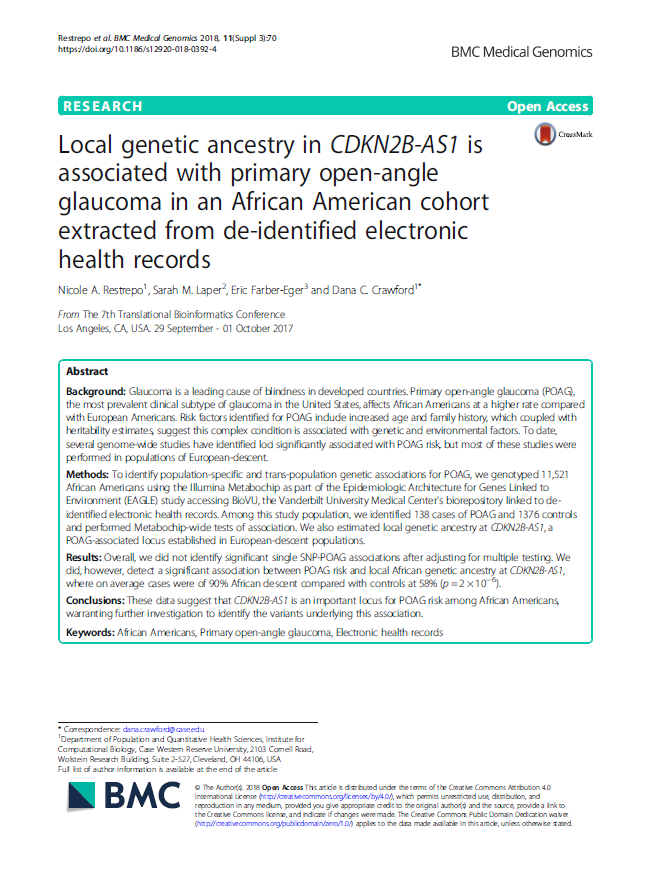Restrepo NA, Laper S, Farber-Eger E, Crawford DC.
Glaucoma is a leading cause of blindness in developed countries. Primary open-angle glaucoma (POAG), the most prevalent clinical subtype of glaucoma in the United States, affects African Americans at a higher rate compared with European Americans. Risk factors identified for POAG include increased age and family history, which coupled with heritability estimates, suggest this complex condition is associated with genetic and environmental factors. To date, several genome-wide studies have identified loci significantly associated with POAG risk, but most of these studies were performed in populations of European-descent.
To identify population-specific and trans-population genetic associations for POAG, we genotyped 11,521 African Americans using the Illumina Metabochip as part of the Epidemiologic Architecture for Genes Linked to Environment (EAGLE) study accessing BioVU, the Vanderbilt University Medical Center’s biorepository linked to de-identified electronic health records. Among this study population, we identified 138 cases of POAG and 1376 controls and performed Metabochip-wide tests of association. We also estimated local genetic ancestry at CDKN2B-AS1, a POAG-associated locus established in European-descent populations.
Overall, we did not identify significant single SNP-POAG associations after adjusting for multiple testing. We did, however, detect a significant association between POAG risk and local African genetic ancestry at CDKN2B-AS1, where on average cases were of 90% African descent compared with controls at 58% (p = 2 × 10- 6).
These data suggest that CDKN2B-AS1 is an important locus for POAG risk among African Americans, warranting further investigation to identify the variants underlying this association.

